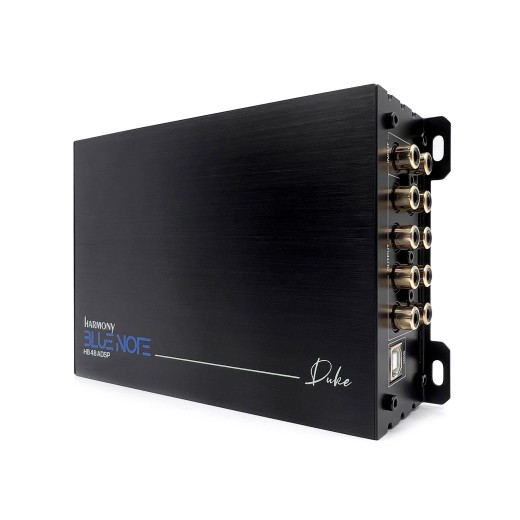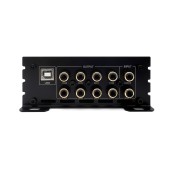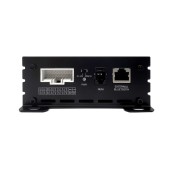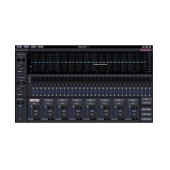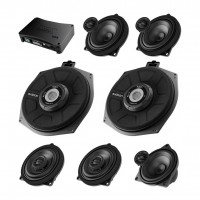Amplifier with DSP processor Harmony HB 48 ADSP
More about the product
Amplifier with DSP processor Harmony HB 48 ADSP
Harmony presents a four-channel amplifier with an integrated DSP processor and an honest 4 x 35 W RMS output. The amplifier impresses with its small dimensions, quality workmanship, equipment and sound, which you would expect from significantly more expensive products. The Harmony HB 48 ADSP can also be used as a separate DSP processor and connect, for example, more powerful amplifiers. There is a very intuitive DSP processor program with a 31-band parametric equalizer as well as a mobile application for easy setup on a mobile phone. Bluetooth streaming and a built-in player with Hi-Res audio support and the ability to switch songs on the remote control will please you. A great product to significantly improve the sound and performance in your vehicle with easy integration into your existing system.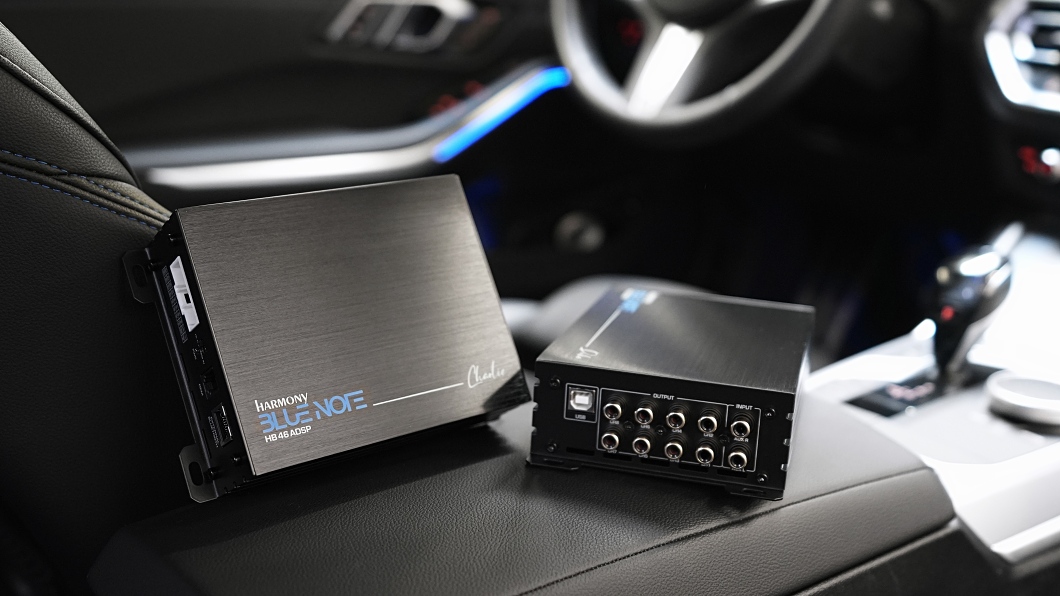
The main features of the Harmony HB 48 ADSP amplifier
- 4-channel amplifier with integrated DSP processor.
- Amplifier with a power of 4 x 35 W RMS.
- Possibility to use it as a separate DSP processor and connect a stronger amplifier.
- Inputs: 2 x low level (RCA), 4 x high level.
- Outputs: 8 x low level (RCA)
- 31-band parametric equalizer.
- Setting of bandpasses, time corrections or detailed equalizer.
- 5.1 Bluetooth for music streaming.
- Integrated player in the remote control with the ability to switch tracks.
- Intuitive mobile application for easy setup via smartphone.
About the Harmony brand
The Italian brand Harmony was born in the 80s together with the first home speakers produced by the Italian hi-end manufacturer ESB Audio. Car speaker production began in the 1990s with a wide range of products that combined high sound quality with a significantly lower price point than ESB Audio products. And that was the main mission of the Harmony brand - to provide a high standard of sound quality with faithful reproduction of the entire sound spectrum, superior processing and all this at a more affordable price. The same applies in 2022, when ESB Audio decided to create a new Harmony product line. This includes component and coaxial speakers, a subwoofer, subwoofers under the seat, and amplifiers with a DSP processor at a very affordable price are worth mentioning. More interesting high quality products will follow under the sophisticated control of parent company ESB Audio.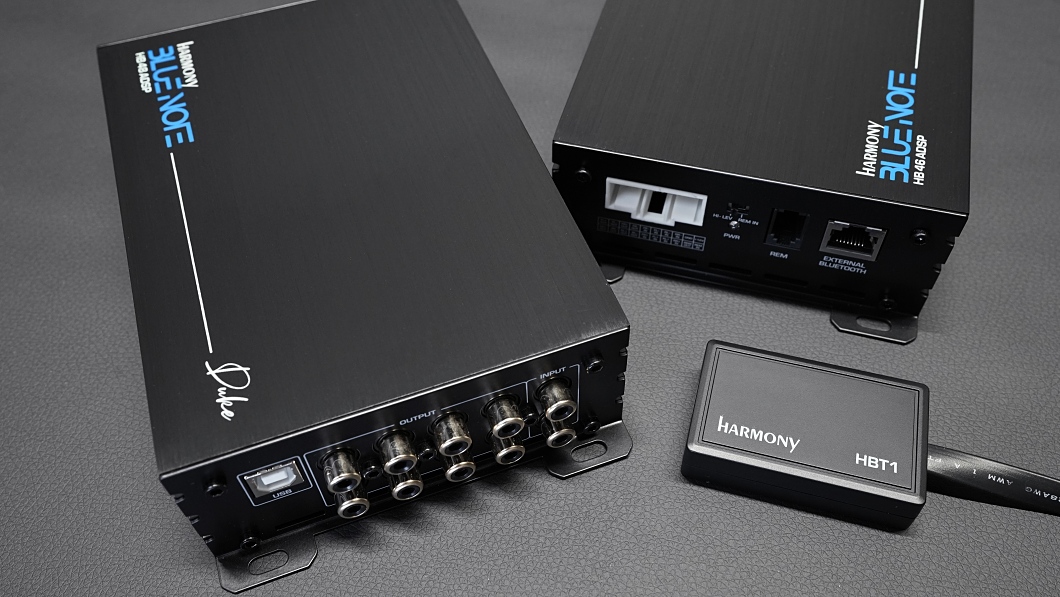
| Catalog number | HARMONY HB 48 ADSP |
| Brand | Harmony |
| Links | Official web presentation (English) |
